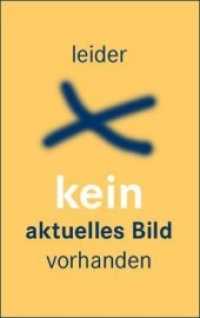- ホーム
- > 洋書
- > 英文書
- > Architecture
Full Description
The battle in architecture between the internationalist voices of modernism and the localized resistance, which favored traditional technologies and regional precedents, reflected in microcosm the violent and complex histories of twentieth-century Germany. The chapters in this book span the years from 1902 to 1991 and interrogate the ways in which architecture constructed and reconstructed these histories, with a primary focus on those voices that were opposed to the dogmas of modernism. All translated into English for the first time, the chapters reflect the changing eras and contours of the German nation. They were written in the German Empire (1871-1918); the Weimar Republic (1918-1933); the Third Reich (1933-1945); the Federal Republic of Germany and the German Democratic Republic (GDR), which both existed from 1949 to 1990; and, finally, the reunified Germany that came into being in 1990 when the former GDR and the reunified Berlin joined the Federal Republic of Germany.
The chapters in this book were originally published as a special issue of Art in Translation.
Contents
Preface Introduction: Constructing and Reconstructing History in Twentieth-Century German Architecture 1. The 'Restoration' of Our Old Buildings 2. Villa 3. The Architecture Exhibition in Munich 1926 4. Tradition and New Building 5. Northern and Southern Germany: Notes on the Works of the Architect Emil Egermann, Berlin 6. The Buildings of the Third Reich 7. Architecture in the New Reich 8. The Motor Highways built by Herr Hitler: The Planning, Construction and Importance of the Reich Motor Roads 9. Heretical Thoughts at the Edge of the Rubble Heaps 10. An Appeal: Fundamental Demands 11. Art and Science on Track 12. Architecture in the Age of Science 13. Requiem for Putti 14. The Case for Abolishing Historic Building Preservation 15. Architectural Monuments








